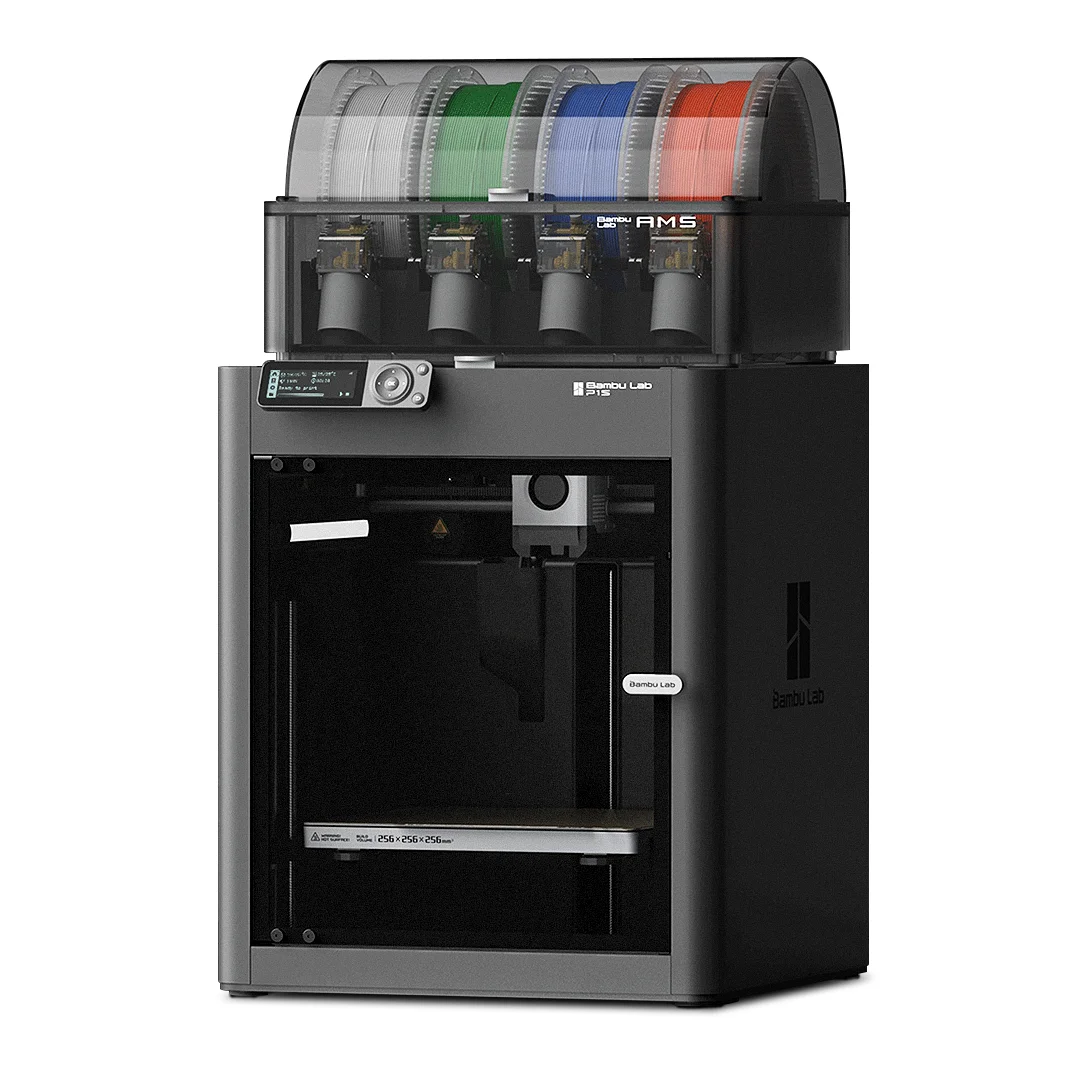Compare Comgrow T300 vs P1S
Comparison between the best 3D printers
Choose the best 3D printer at the best price. The cheapest 3D printers are here.
Buy a 3D printer here with 3D Fila.
 |
 |
|
| Model | Comgrow T300 |
P1S[BUY P1S] |
| Printing Material | Filament | Filament |
| Buy Filament for Sovol Comgrow T300 | Buy Filament forBambu Lab P1S | |
| Estimated price | $449,00 | $949,00 |
| Manufacturer | Sovol | Bambu Lab |
| Release Year | 2024 | 2023 |
| Print Volume [mm] | 300x300x350 | 256x256x256 |
| Printer Size [mm] | 503x631x831 | 389x389x458 |
| Weight [kg] | 17 | 12,95 |
| Power Loss Recovery | YES | YES |
| Enclosed printer | NO | YES |
| Bed Leveling | Automatic | Automatic |
| Filament End Sensor | YES | YES |
| Bed type | Heated | Heated |
| Power supply system | Direct Drive | Direct Drive |
| Standard nozzle | 0,4 | 0,4 |
| Maximum Nozzle Temperature [°C] | 300 | 300 |
| Maximum Bed Temperature [°C] | 100 | 100 |
| Maximum printing speed [mm/s] | 600 | 500 |
| Filament holder | YES | YES |
| Camera for supervision | NO | NO |
| Recommended filaments | PLA, PETG, PET, TPU, PA, ASA, PC, PLA CE, PA-CF, PET-CF | PLA, PETG, TPU, PVA, PA, PA-CF, Nylon, PC |
| Recommended slicers | Bambu Studio, Super Slicer, Cura, Prusa Slicer, Orca Slicer | Bambu Studio, Super Slicer, Cura, Prusa Slicer, Orca |
| Maximum Resolution [mm] | 0,1 | 0,1 |
| Processor | 64 bit | Quad ARM A7 1.2 GHz |
| Display | Touchscreen 5'' | Touchscreen 5'' |
| Power Supply | 150 W | 350 W |
| Connectivity | USB, WiFi | Wifi, Bambu bus, Cartão SD |
| Operating systems | Windows, Linux, Macbook | Windows, Linux, Macbook |
| Date of registration in the system | 2024-05-10 | 2024-04-11 |
| Release date | 2024 | 2023 |
| Extra features | The Sovol Comgrow T300 printer stands out for its technological innovations and advanced features. With a print size of 300mm300mm350mm, the T300 offers true linear rails on all axes, ensuring greater stability. Its Klipper-based intelligent core and 64-bit microcomputer increase printing speed and quality through pressure advancement and input shaping. The extruder with a gear ratio of 6.5:1 allows for more precise material control, optimizing the printing of flexible materials. In addition, the T300 features a rapid filament cooling system with a high-speed fan and a circular duct piece that improves cooling efficiency. With a 4.3-inch high-refresh rate touchscreen and an 81-point automatic leveling system, the T300 simplifies the preparation and execution of 3D prints. | The Bambu Lab P1S stands out for its out-of-the-box practicality, eliminating the need for manual adjustments with automatic calibrations such as bed leveling and vibration compensation. It features multicolor printing capability through the AMS system, allowing up to 16 colors when connecting four AMS units. With an advanced control algorithm, the P1S offers fast printing speeds without sacrificing quality. Equipped with modern features such as filament end sensor, semi-automatic belt tension, direct extruder, welded frame and all-metal hotend, along with a fully enclosed chamber, the P1S promotes a superior printing experience, supporting a wide range of materials. |
| Support for multiple colors and materials (AMS and CFS) | NO | YES |
Notes * |
||
| Cost-benefit | 8 / 10 | 7 / 10 |
| Hardware | 3.6 / 10 | 6.4 / 10 |
| Tela | . | . |
| Print volume | 4 / 10 | 4 / 10 |
| Performance | 5 / 10 | 4 / 10 |
| [BUY P1S] |
Conclusion |
| In comparing the Comgrow T300 and the Bambu Lab P1S 3D printers, several key differences emerge that can help potential buyers make an informed decision. The Comgrow T300 offers a larger print volume, which may appeal to those seeking to create larger projects. It also boasts advanced features such as true linear rails for improved stability, high-speed cooling systems, and a highly responsive touchscreen interface. This model is particularly suited for users who prioritize technical innovations and versatility in material usage. Its cost-effectiveness is another significant advantage, making it an attractive option for budget-conscious hobbyists or small-scale users. On the other hand, the Bambu Lab P1S emphasizes ease of use and reliability, thanks to its enclosed design and automated calibration features. It supports multicolor printing with the AMS system and has a solid construction, which may appeal to professionals or those who require consistent quality and advanced printing capabilities. Although it comes at a higher price point, its overall performance and support for a variety of materials might justify the cost for serious users. In conclusion, the choice between the Comgrow T300 and the Bambu Lab P1S ultimately hinges on individual priorities: if you seek a larger print volume and innovative features at a lower price, the T300 may be the right choice. However, if ease of use, reliability, and advanced printing capabilities are paramount, then investing in the P1S could provide greater long-term value. Both models exhibit commendable performance, each catering to distinct user needs within the 3D printing landscape. |

